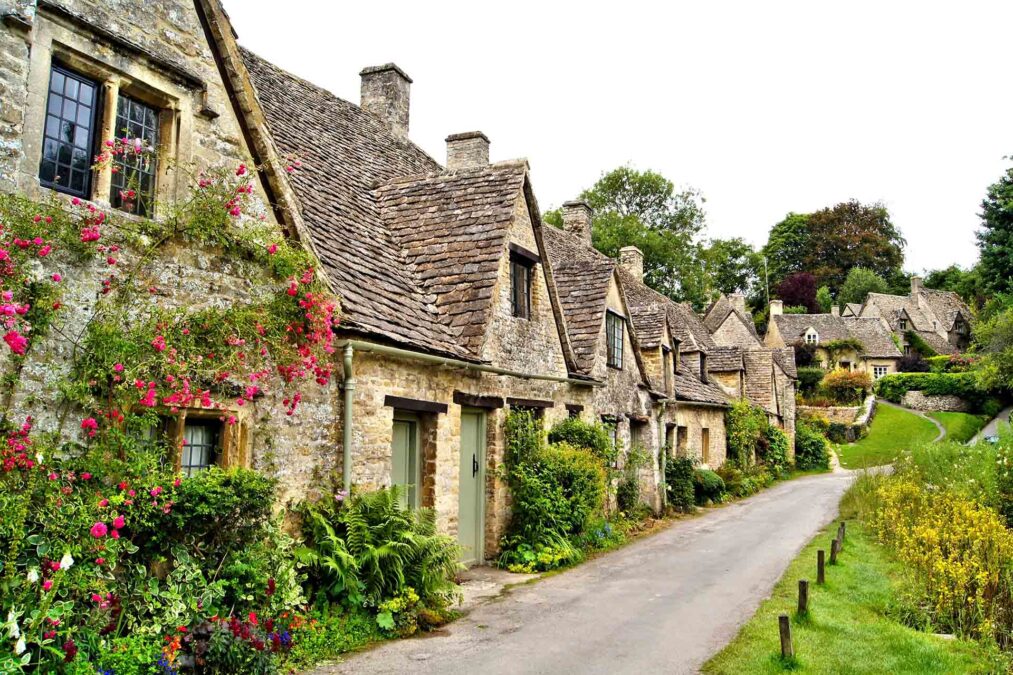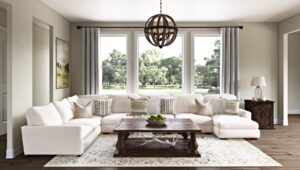The Timeless Beauty of Cotswold Living: Finding Your Dream House in the English Countryside

It’s early morning in the Cotswolds, and the golden light of sunrise washes over rolling hills and honey-coloured limestone cottages. Smoke curls lazily from chimneys as the village begins to stir—farmers prepare their stalls for the market, neighbours greet each other with warm smiles, and the sound of church bells echoes softly in the distance. This isn’t just a moment from a postcard; it’s everyday life in the Cotswolds, where the pace is slower, the air is fresher, and a sense of timeless charm infuses every corner. Imagine waking up in a home with picture-perfect views, the community is close-knit, and every Day feels like a retreat from the chaos of modern life. For those seeking such a lifestyle, the Cotswolds offers an irresistible allure.
The house cotswolds, designated as an Area of Outstanding Natural Beauty (AONB), is one of the most desirable locations in the UK to live. Known for its idyllic countryside, charming villages, and quintessential English charm, the region attracts everyone from families and retirees to celebrities and international buyers. But purchasing a house in the Cotswolds is about more than owning a property—it’s about embracing a unique way of life. This article explores the Cotswolds housing market, trends, and what makes this region a dream destination for homeowners.
Why the Cotswolds is a Dream Location
The Cotswolds covers an area of 787 square miles and covers six counties, including Gloucestershire, Oxfordshire, and Worcestershire. Its blend of picturesque landscapes, historic architecture, and cultural heritage has made it a magnet for those seeking a rural lifestyle. What sets the house cotswolds apart is the combination of unspoiled countryside and proximity to major cities. London is just a 90-minute train ride from many Cotswold towns, making it an ideal retreat for professionals who want the best of both worlds.
The region is home to some of the UK’s most famous villages, including Bibury, Bourton-on-the-Water, and Chipping Campden. These villages feature iconic limestone cottages, cobblestone streets, and scenic rivers, embodying the essence of rural England. But the house cotswolds isn’t just about picture-perfect aesthetics. It offers a thriving community, top-rated schools, and various activities, from hiking and cycling to historic landmarks and artisan markets.
Cotswold Housing Market Overview
The house cotswolds housing market has long been one of the UK’s most robust, thanks to its enduring appeal and high demand from domestic and international buyers. According to Rightmove, the average property price in the Cotswolds over the past year was £535,000, significantly higher than the UK average of £296,000 (as reported by the UK House Price Index). This premium reflects the region’s exclusivity and the quality of life it offers.
Breakdown of property prices by type:
- Detached homes: £735,000 on average, with premium properties in sought-after villages exceeding £1 million.
- Semi-detached homes: £450,000 on average, ideal for families or second-home buyers.
- Cottages and period homes: Prices vary widely, starting at £400,000 for smaller cottages and exceeding £2 million for more significant properties with historic significance.
The market for Cotswold properties has grown particularly competitive in recent years, fueled by the pandemic-induced “race for space.” More people are leaving cities in favour of rural locations that offer larger homes, outdoor space, and a better quality of life. According to Savills, demand for homes in rural and semi-rural areas like the house cotswolds increased by 22% in 2022, with many properties selling well above their asking prices.
Why Buyers Are Drawn to the Cotswolds
- A Perfect Blend of Rural and Urban
- The Cotswolds offer a unique combination of rural tranquillity and accessibility. Its proximity to cities like Oxford, Bristol, and London makes it ideal for professionals who want to escape the city without entirely severing ties.
- Lifestyle and Community
- Living in the house cotswolds means more than owning a beautiful home—it’s about being part of a thriving community. Villages host regular farmers’ markets, festivals, and cultural events, fostering a strong sense of connection among residents.
- Outdoor Living and Activities
- The house cotswolds is a paradise for outdoor enthusiasts with its rolling hills, historic trails, and charming waterways. Residents can enjoy activities like hiking the Cotswold Way, cycling through scenic countryside, or paddling along the River Windrush.
- High-Quality Schools and Family Appeal
- The Cotswolds is a popular choice for families thanks to its state and independent schools. Schools such as The Cotswold School and Dean Close School in Cheltenham are highly regarded, attracting families from across the country.
- Second Homes and Holiday Lets
- Many buyers view Cotswold properties as investments. The region’s popularity as a tourist destination means homes can generate significant income as holiday lets. According to AirDNA, the average nightly rate for holiday rentals in the Cotswolds is around £250, with high occupancy rates during peak seasons.
Spotlight on Cotswold Property Types
- Cottages
- The iconic limestone cottages of the house cotswolds are among the most desirable properties in the region. These homes, often centuries old, feature traditional charm with modern upgrades. Cottage prices typically start at £400,000, with more significant or more historic properties exceeding £1 million.
- Farmhouses and Barn Conversions
- For buyers seeking space and privacy, farmhouses and barn conversions are ideal. These properties often come with large plots of land and stunning countryside views, making them perfect for families or those looking to embrace rural living. Prices range from £600,000 to over £2 million, depending on size and location.
- Modern Country Homes
- In addition to period properties, the house cotswolds has many modern developments designed to blend with the area’s character. These homes offer contemporary comfort while maintaining traditional aesthetics, with prices starting at £500,000.
- Luxury Estates
- For those seeking the pinnacle of Cotswold living, luxury estates offer expansive grounds, state-of-the-art amenities, and unparalleled privacy. Properties in this category often exceed £3 million, attracting high-net-worth individuals and international buyers.
Trends Shaping the Cotswold Housing Market
Several key trends are driving demand for properties in the Cotswolds:
- Pandemic-Fueled Migration
- The COVID-19 pandemic has reshaped buyer priorities, with many people seeking homes in rural areas. According to Knight Frank, 68% of buyers in 2023 cited outdoor space as their top priority, making the Cotswolds a prime destination.
- Second Homes and Investments
- The house cotswolds is one of the UK’s most popular destinations for second homes. Many buyers purchase properties as holiday retreats or investments, taking advantage of the region’s booming tourism industry.
- Sustainability and Eco-Living
- Eco-friendly homes are becoming increasingly popular in the Cotswolds. Many new developments incorporate sustainable designs, while older properties are retrofitted with energy-efficient features to meet demand from environmentally conscious buyers.
Challenges for Buyers in the Cotswolds
While the house cotswolds is undeniably attractive, buyers should be aware of specific challenges:
- High Competition: Home demand often outstrips supply, particularly in sought-after villages. Many properties sell quickly, often above the asking price.
- Maintenance Costs: Period homes like cottages and farmhouses may require ongoing maintenance to preserve their historic features.
- Affordability: With average property prices significantly higher than the national average, the Cotswolds can be out of reach for some buyers.
What to Consider When Buying a House in the Cotswolds
- Location: Decide whether you prefer a bustling village like Chipping Campden or a quieter, secluded area.
- Property Type: Consider whether a period cottage, a modern home, or a more significant estate fits your needs and lifestyle.
- Connectivity: For commuters, proximity to transport links such as train stations is essential.
- Investment Potential: If you’re buying a second home or holiday let, research the property’s rental potential and seasonal demand.
Conclusion
The Cotswolds is more than just a place to live—it’s a lifestyle that combines natural beauty, rich history, and a vibrant community. Whether you’re drawn to its iconic cottages, expansive countryside homes, or modern developments, the region offers something for everyone.
With strong demand and enduring appeal, the house cotswolds market remains a solid investment for buyers seeking long-term value. While rising prices and high competition pose challenges, the rewards of living in such an idyllic setting make it well worth the effort.
For those dreaming of life in the English countryside, the Cotswolds offer a chance to turn that dream into reality—one golden-stone home at a time.




